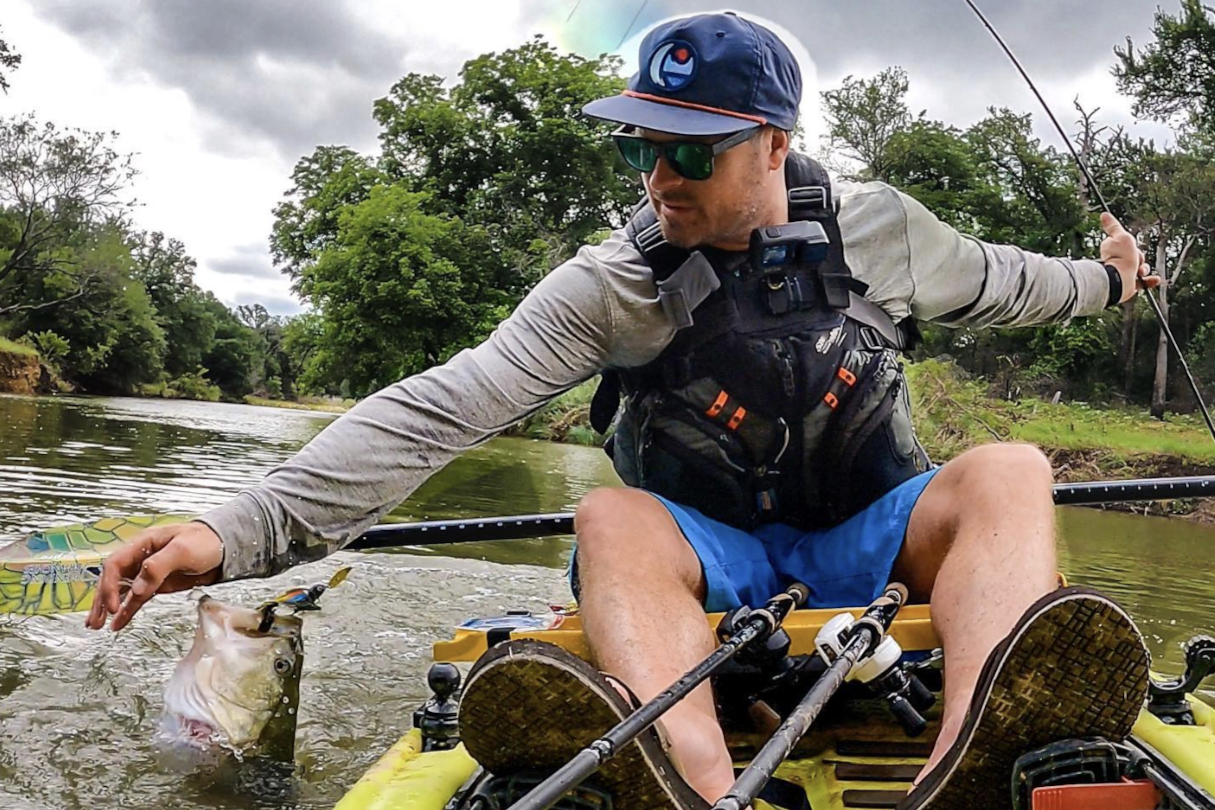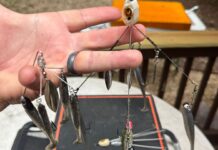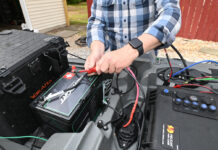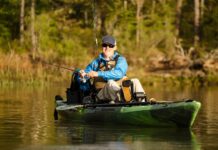Long before forward-facing sonar was the hot button issue in fishing, the Alabama rig was causing waves for many of the same reasons. The ultimate balance of pain versus reward, this divisive bass fishing rig has been both lauded and shunned by anglers for the past several decades.
Also known as an umbrella rig, it’s essentially a miniature version of a setup with the same name that offshore saltwater anglers have used for decades. Resembling a Christmas tree of hard wire with swimbaits in place of ornaments, the saltwater umbrella rig is commonly used to troll for species like tuna and striped bass. The freshwater version was adapted by lure designer Andy Poss, with the same basic design in a stripped-down and castable frame.
The most common style of Alabama rig, or A-rig as it’s usually referred to, is a plastic head with a simple spread of five wires that end in a snap swivel. The angler can attach an array of different lures and blades to these snaps, with the most common being a simple jig head and paddle tail swimbait. The rig is designed to mimic a large school of baitfish, drawing attention from hungry predators that may ignore a single lure.
However you feel about this rig, it’s a tool that you’ll almost certainly want to be familiar with if you’ve ever struggled to get a bite. Whether you’re dying to try it out or only want to understand the basics in case of an emergency, read on to learn more about how to properly fish this unconventional setup.
How to rig and fish the Alabama rig
How to set up an Alabama rig
Despite its size and complexity, the A-rig is nice in that it usually comes just about ready to fish out of the package.
Attaching the rig
You’ll need a very heavy line to fish this rig properly, typically 40lb braid minimum. I typically don’t use a leader since there’s nothing subtle about this rig and adding extra line tends to just get in the way.
Begin by attaching your line to the swivel or eye at the tip of the rig, usually located on the nose of a jig-style head.

Setting the wires
Next, you’ll want to bend and adjust the wires to a desirable angle. While there are many variations, the standard A-rig has five wires—four exterior wires and one longer wire in the center to act as the primary trailer. You can bend the exterior wires however you’d like, but typically a 45-degree angle creates the look of a nice, wide baitfish school without causing obstruction to the action of the rig.
Hooks and teasers
Now comes the fun part: building out your rig by attaching jig heads, spinners and teasers to the snaps on the rig.
First and foremost, it’s important to know the regulations for the area where you’re fishing. While a standard A-rig can be fished with up to five hooks, many states only allow a maximum of three hooks or less. If this is the case in your state, most people prefer to add willow-style spinner blades to the remaining snaps in place of lures.
Another option is to create teasers by trimming the hooks off two of your jigs, allowing them to maintain the look and action while remaining legal to fish. If you go this route, I’ve found that adding a dab of super glue to the bait keeper on your jighead is the best way to keep your teaser plastics in place.
Weight choices
The biggest consideration when it comes to weight is what depth you want to target. If you’re seeing fish high in the water column or on the surface, you will want to use very light or even unweighted jigs. I go as small as 1/32oz at times, particularly if the forage is small. If you want to dredge the bottom in deeper areas, using heavy jigs will help get the rig down. I like to use tungsten jig heads in this instance, as they add considerable weight without adding bulk.
Alabama rig lure choice
Regardless of how many hookless wires you have, you’ll still need to build out the remaining snaps. The most common lure used for this is a standard paddle tail swimbait on a jig head. Because these rigs come with snaps, once you’ve made your lure choice all you have to do is rig them onto the jig head and attached the jigs to A-rig snaps.
While the style of lure doesn’t vary much, the size and weights used can be drastically different based on where and what species you’re fishing for. If you’re targeting fish that are feeding on small glass minnows or alewives, you’ll likely want a smaller profile swimbait with small jig heads. If you’re in an area where the forage is primarily larger shad, you’ll need to upgrade the size of your lures in kind.
Another important thing to consider is water clarity. I prefer realistic baitfish patterns in clear water or brighter colors and more eye-catching patterns if the water is stained.
Pro Tip
One helpful tip I learned from a seasoned A-rig pro is to pick one lure and make that the primary target for the fish. A typical Alabama rig will usually have one centrally located long wire that sticks back just a touch further than the rest. This wire can be used as your primary trailer, and there are several ways to help fish key in on it.
The first thing is to upgrade the size of your lure slightly on this wire, giving it the appearance of a meatier baitfish at the back of the pack.
Another great option to help distinguish this lure is to give it a little pop of color that the rest of your trailers lack. If the rest of your lures are on natural or darker jig heads, try using a bright chartreuse or pink head for the primary trailer.
Favorite Alabama rig lures
Rod and reel options
No matter how you end up setting up your A-rig, you’ll want the proper rod and reel to throw it on. This is probably the most important aspect of properly fishing an Alabama rig, as you need a setup that’s built to throw something heavy all day.
While you may be able to get away with using a heavy spinning setup, there’s no doubt that a baitcaster is the recommended option. A heavy baitcasting setup will allow you to properly deliver this bulky rig cast after cast, while also allowing you to put the required amount of cranking action and force behind the retrieve. These same reasons are why many musky anglers prefer similar setups, and in fact, a musky rod and reel are an excellent option for throwing larger Alabama rigs.
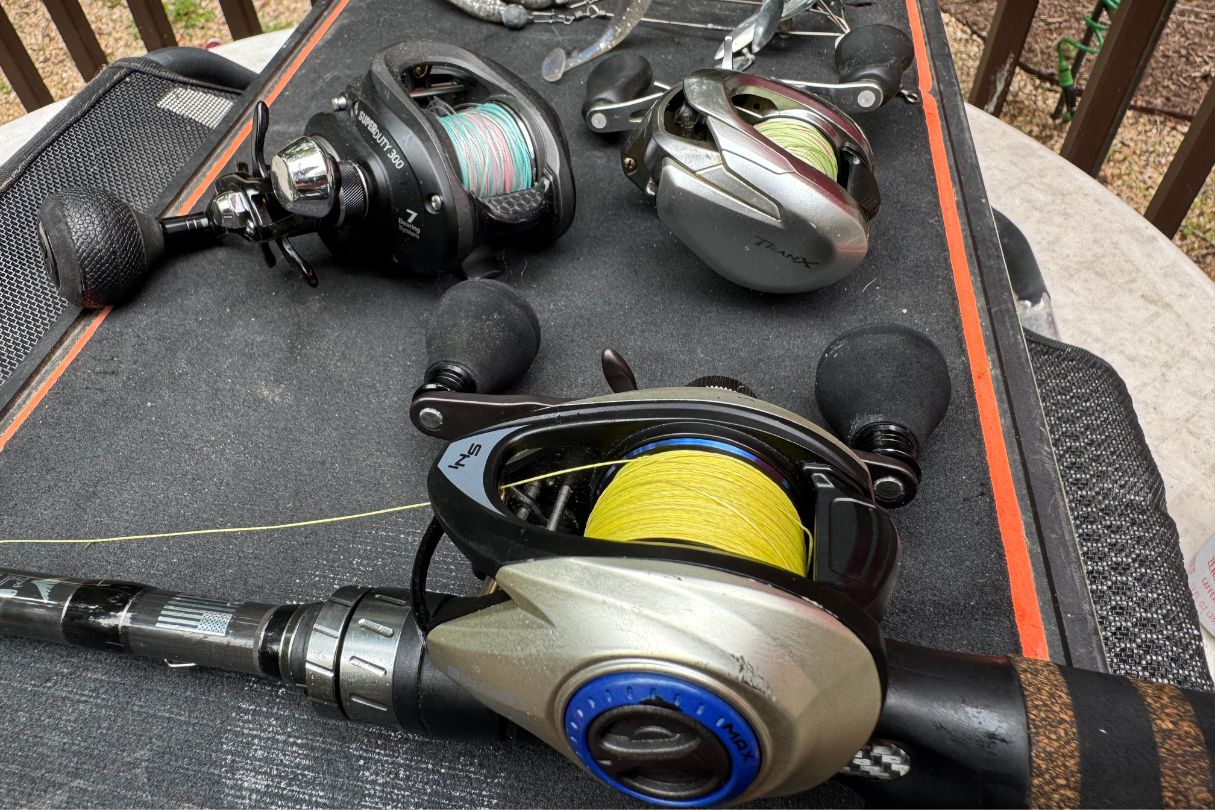
The ideal reel size for your setup may vary based on the size of your a-rig, but generally you’ll want a baitcaster in the 200 or 300 size range, spooled with at least 30lb braid.
For rods, you’ll want something that’s at least medium-heavy power, but heavy is best. I also like a longer rod, 7’3” or above, to help add distance when casting this cumbersome rig.
Personally, I do a lot of inshore and nearshore saltwater fishing, and I’ve found that my heavier inshore setups are actually ideal for throwing an Alabama rig in freshwater.
Alabama rig rod options
Favorite reel options
How to fish the Alabama rig
Fishing an Alabama rig can be summarized easily: cast, crank, repeat.
There’s not a lot of technique involved when fishing an Alabama rig. The biggest factor to consider is what depth you want to retrieve your lure. Aside from that, you’ll essentially be blanketing the area with the longest casts possible and working the rig on a steady retrieve back to the boat. You may want to occasionally vary retrieval speeds or pause briefly, but given the nature of the rig, there isn’t much benefit to adding any sort of action. This rig is designed to do everything for you, and the best way to fish it is simple. Cast, crank, and hold on.

When to fish the Alabama rig
While this rig can draw strikes just about any time, there are specific situations that it was designed for and where it outshines most other options. First and foremost, an Alabama rig can’t be beat when fish are actively feeding on schooling baitfish. If you’re fishing a body of water with a good population of bait like shad or herring, an A-rig will almost always get attention. It can be doubly effective during the times of year when baitfish are spawning or migrating in large groups, primarily spring and fall.
Another good time to fish this rig is when you know fish are around and feeding, but you’re not getting strikes. This is a particular issue with freshwater striped bass, which are known for being both voracious predators while also being incredibly stubborn and picky. I’ve been in the middle of a striped bass blitz, fish blowing up everywhere, and they simply will not touch a single swimbait or plug thrown their way. Short of live bait, there’s practically nothing that will draw a strike. In these instances, I’ve had a surprising amount of success by throwing an Alabama rig. While fish may be able to discern one artificial swimbait amongst a school of live bait, throwing an entire artificial bait ball their way can trigger them to attack with far less awareness.
The Alabama rig controversy
So, why is this rig so controversial? It began in the early 2010s, when tournament bass anglers started throwing this unusual setup and blowing away the competition. Many pointed to ethical concerns, lack of fishing skill required, or potential legal grey areas in fishing regulations. Sound familiar? Comparisons to the current controversy over forward-facing sonar aside, there’s no denying the A-rig is absolutely lethal when used in the right situations. So much so that most professional bass tournaments outlawed the rig within a few years of it gaining popularity.
While it may be a no-no in tournaments these days, the A-rig is still very much in play for recreational anglers. That said, for many (myself included) it’s the nuclear option. The giant, unwieldy yet lethal tool hidden away in the shadows of our tacklebox.
Regardless of angler preference, there’s simply no denying the effectiveness of this rig. When used at the right time, an Alabama rig can utterly change the trajectory of a fishing trip. I’ve seen wary striped bass that would barely touch live bait go into a frenzy over a well-presented A-rig. The same can be said about spotted bass and largemouth, especially in larger lakes with pelagic baitfish like herring, shad, or alewives.
Drawbacks of the Alabama rig
It’s been mentioned throughout this article, but the biggest drawback to fishing an Alabama rig is simple: it’s huge. It can be a pain to throw and causes a lot of frustration when it comes to storage. Having a chandelier of hooks and spinner blades flopping all over the place on a moving boat can be a minor annoyance, to say the least.
It also bears repeating that there are legal issues around these rigs. You should do proper research on regulations in your area before throwing a fully rigged umbrella out.
Lastly, while A-rigs are great for covering a lot of water, they aren’t exactly weedless and tend to foul up frequently because of all the hardware.
If you’re in a situation where you want to throw an A-rig but are hesitant because of any of the factors listed above, there are a few good fallback choices that will do the trick. The first is to throw a classic spinnerbait with a swimbait trailer. This classic is essentially a downsized A-rig that can be thrown on much lighter gear while also being mostly weedless. Another great option is a swimbait on an underspin jighead. Underspins have grown in popularity in recent years. They provide a compact and versatile rigging option with many of the same benefits of an A-rig with a lot more room for technique.
Additional tips
- If you’re not happy with the way the rig is casting or swimming, try bending the wires at different angles. Sometimes a simple adjustment is all it takes to improve the action.
- Experiment with different sized swimbaits on the same rig. While a uniform baitfish school is the standard look, you never know when adding some variation will pay off.
- Sometimes you need to fish deep but the fish are keyed in on extremely small bait. If you want to increase the weight of your rig without increasing the size of your lures, try using a snap to add a trolling sinker to your mainline just above the head of the lure. This will allow it to still swim properly while getting down faster and not altering the size of your jigs.
While the popularity of the Alabama rig has ebbed and flowed over the past few decades, the fact remains that it’s a fish-catching machine. It’s one of the most unique rigs out there, drawing bites when almost nothing else will. If you’re having a tough day, I encourage you to crack open the “emergency” tray in the back of your tackle box and start chucking that big, flashy umbrella rig.
Feature Image: Kevin Hughes

